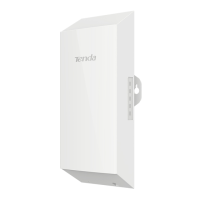139
8.6.5 SNMP Agent
Overview
The Simple Network Management Protocol (SNMP) is the most widely used network management protocol in
TCP/IP networks. SNMP enables you to remotely manage all your network devices compliant with this protocol,
such as monitoring the network status, changing network device settings, and receive network event alarms.
SNMP allows automatic management of devices from various vendors regardless of physical differences among
the devices.
SNMP Management Framework
The SNMP management framework consists of SNMP manager, SNMP agent, and Management Information Base
(MIB).
− SNMP manager: It is a system that controls and monitors network nodes using the SNMP protocol. The
SNMP manager most widely used in network environments is Network Management System (NMS).An
NMS can be a dedicated network management server, or an application that implements management
functions in a network device.
− SNMP agent: It is a software module in a managed device. The module is used to manage data about
the device and report the management data to an SNMP manager.
− MIB: It is a collection of managed objects. It defines a series of attributes of managed objects,
including names, access permissions, and data types of objects. Each SNMP agent has its MIB. An
SNMP manager can read and/or write objects in the MIB based on the permissions assigned to the
SNMP manager.
An SNMP manager manages SNMP agents in an SNMP network. The SNMP manager exchanges management
information with the SNMP agents using the SNMP protocol.
Basic SNMP Operations
The CPE allows the following basic SNMP operations:
− Get: An SNMP manager performs this operation to query the SNMP agent of the CPE for values of one
or more objects.
− Set: An SNMP manager performs this operation to set values of one or more objects in the MIB of the
SNMP agent of the CPE.
SNMP Protocol Version
The CPE is compatible with SNMP V1 and SNMP V2C and adopts the community authentication mechanism.

